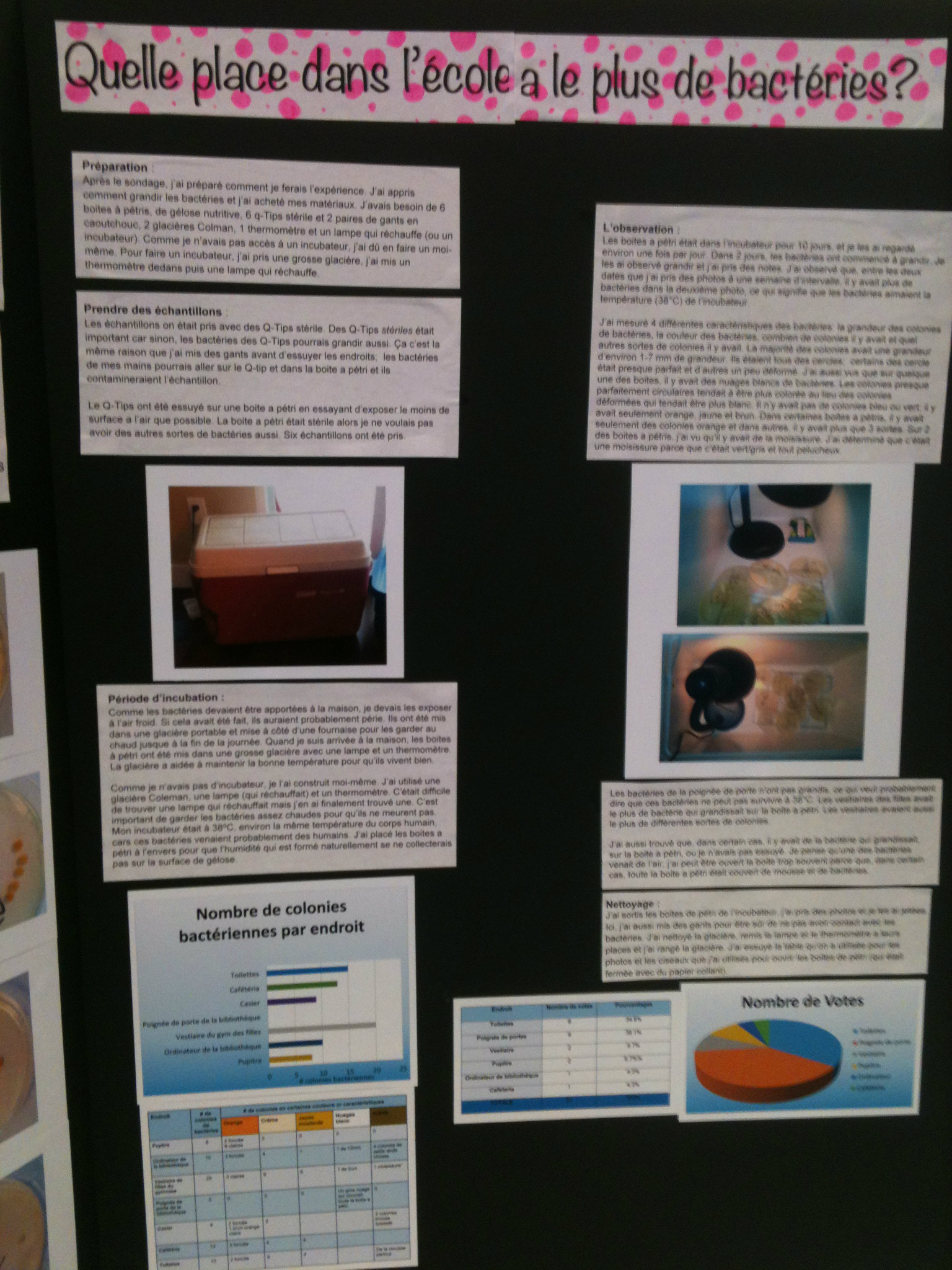 What is the "germiest" place in our school? This is the question that inspired Sienna Watson’s science fair project this year. Except that, since she's a student at École Jules Verne, a francophone secondary school in Vancouver, she actually asked: “Quelle place dans l’école a le plus de bactéries?”
What is the "germiest" place in our school? This is the question that inspired Sienna Watson’s science fair project this year. Except that, since she's a student at École Jules Verne, a francophone secondary school in Vancouver, she actually asked: “Quelle place dans l’école a le plus de bactéries?”
Sienna, who is a grade 7 student, displayed her work at the Expo-sciences at École Jules Verne on February 19, along with about 200 other grade 6–12 students from Jules Verne, École Rose-des-Vents and École des Navigateurs. Along with the primary students from neighbouring École Rose-des-Vents, I toured the project tables and asked questions of the proud researchers. The gym was packed with young scientists who showed off their research on every topic: the materials used for longboard wheels, the trajectories of rockets, the growth of plants and the handedness of cats.
 Sienna’s graphic photos of (yuck!) bacterial cultures from the washrooms, door handles and lockers caught my eye. She explained that, to her surprise, the doorknobs she tested seemed to host very few bacteria. And, maybe less surprising, the gym change room was the richest source of germs. She's not convinced that the doorknobs are actually sterile. Also, contrary to what she'd originally suspected, she found that not all bacteria grow optimally at 38°C. Her next experiment could be to culture her doorknob swabs at different temperatures to look for other sorts of nasties.
Sienna’s graphic photos of (yuck!) bacterial cultures from the washrooms, door handles and lockers caught my eye. She explained that, to her surprise, the doorknobs she tested seemed to host very few bacteria. And, maybe less surprising, the gym change room was the richest source of germs. She's not convinced that the doorknobs are actually sterile. Also, contrary to what she'd originally suspected, she found that not all bacteria grow optimally at 38°C. Her next experiment could be to culture her doorknob swabs at different temperatures to look for other sorts of nasties.
This was probably the first ever all-francophone science fair (Expo-Sciences) in Vancouver and it was organized by a team of committed parents and teachers. The Expo-Sciences was a wonderful celebration, including chemistry shows by Dr Sgarbi from Langara College. I was lucky enough to represent Science World with a Van de Graaff generator and a table of puzzles.
Mes félicitations à Sienna et tous les jeunes scientifiques qui nous montrent que la science se déroule aussi en français! Thanks for a fun and informative morning. Science World looks forward to hearing more from all the young scientists.